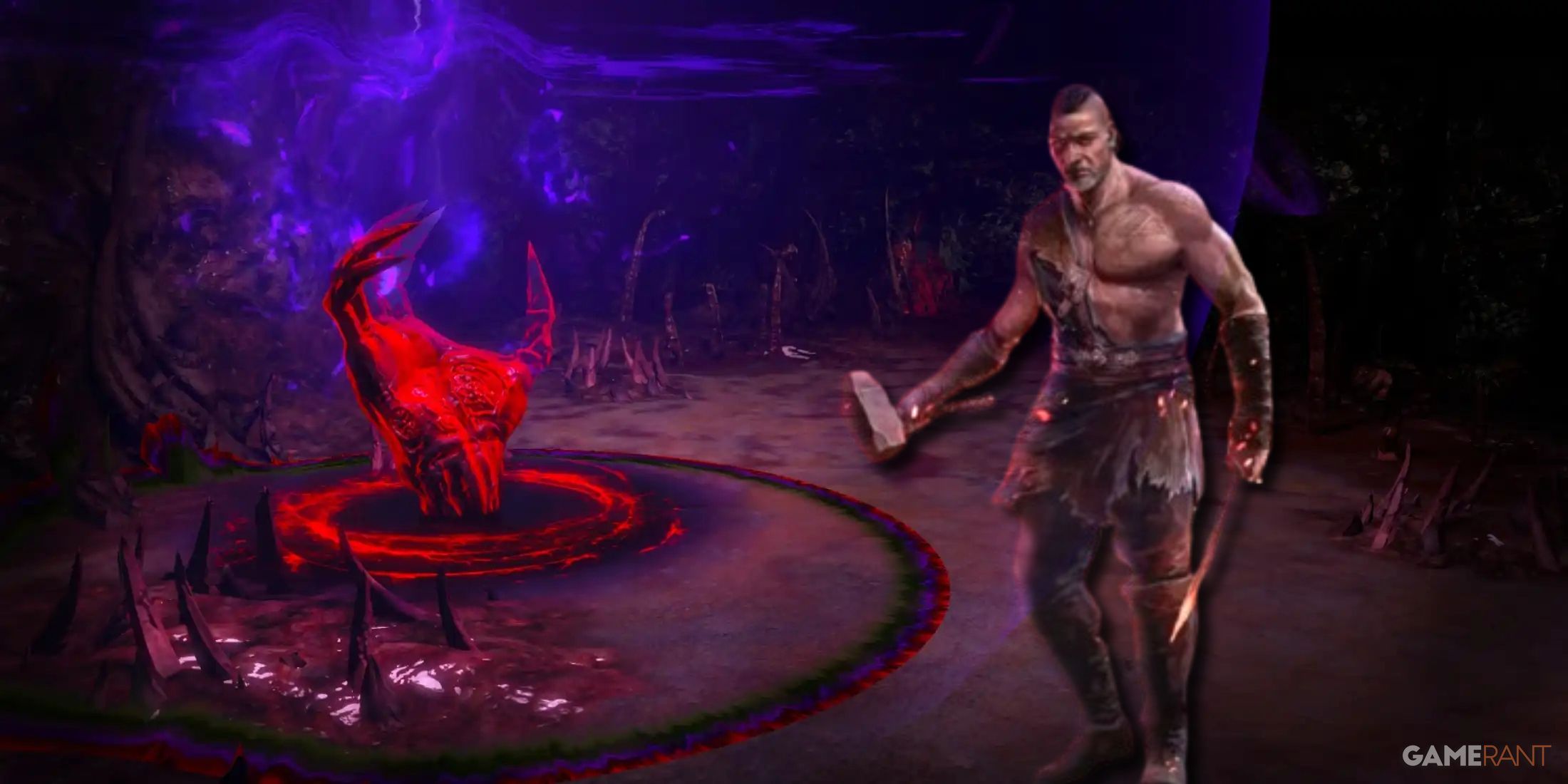WWW.GAMESPOT.COM
2024's Hidden Gems: The Best Games You May Have Missed (Or Never Heard Of)
Odds are, you know the big games in a given year. If you regularly play games, it's hard not to at least hear the names of the latest releases from big publishers, which spend huge sums of money to spread awareness of these releases. But it's often in the smaller, less widely known games that you see the most creativity, innovation, and originality. These are often games that are not seeking to appeal to as many people as possible and are instead the vision of a smaller number of people. That can mean that, when you find the right one, it feels like it's meant for you, because it's so acutely designed to appeal to your particular tastes and sensibilities.As such, identifying hidden gems can be a real treat, because it's an opportunity for us to help spread the word on games we love that might have flown under the radar for you. Just look at Steam or any other digital games storefront and it's hard not to be struck by the staggering number of games that release each week, let alone each year. It's no surprise that there are so many great games that any given person has never heard of.In compiling the list below, we tried to accomplish one thing: Highlight lesser-known games that were released in 2024. Some games that fit that description can also be found in our personal favorites list, where we compiled our individual top choices that didn't make the site's overall top 10. But we couldn't limit ourselves to just those--not when there are so many great games. There's almost certainly a game out there you've never heard of and that will delight you in a very personal way, and hopefully we can help you find one. Pepper GrinderAvailable on: PC, Nintendo Switch, PS5, Xbox Series X|S, PS4, Xbox OneI'm always looking for games that feel like they're doing something new and interesting. That's especially true when what a game attempts is to give you a new way of getting around, and that's at the core of Pepper Grinder. It's a side-scrolling platformer game in which you'll rely on your character's giant drill to burrow through the ground, collecting items and boosting you across jumps that you wouldn't be able to navigate on foot.Given you're meant to be drilling, that means you can't take immediate sharp turns, which--combined with the momentum you build up to exit the group and leap through the air--forces you to be thoughtful about your every move. This quickly becomes intuitive and drives the gameplay throughout, as you'll need to also use your drill to take out enemies in specific ways. Pepper Grinder is a short game but a good one, with new ideas and challenges being consistently introduced throughout.-- Chris Pereira See at Fanatical Fanatical and GameSpot are both own by Fandom. EuropaAvailable on: PC, Nintendo SwitchWhat If Studio Ghibli made Journey? That's the simple explanation of Europa, a gameplay-light puzzle-platforming game in which you mostly just float around a gorgeous but troubled world digging up a mysterious past. Playing a young boy with an odd jetpack strapped to his back, you'll hover to the top of green hills, through magnificent ruins, and occasionally dodge enemies or other obstacles--though the game wisely offers a Zen Mode that lets you turn off some of these elements so you can more freely vibe with the world.Europa is essentially a game about nature and the balance of our planet, told through a futuristic story about humans who have fled to Jupiter's moon to start anew after Earth became uninhabitable. Are we doomed to make the same mistakes elsewhere? As beings living in the present, what do we owe future generations? Europa grapples with these big-picture ideas but does so in a Ghibli-esque manner, complete with incredible music and an atmosphere that feels relaxing even when the story stakes are, at times, more serious.-- Mark Delaney See at Steam Content WarningAvailable on: PCThe long lineage of horror games inspiring other horror games continues in Content Warning, which is clearly modeled after Lethal Company. Like 2023's breakout hit, you and three friends descend into dark depths to investigate strange creatures in an unfriendly environment before hopefully escaping with your life. The monsters are difficult to describe and quick to kill. But Content Warning's unique spin on the formula makes it one of my favorites in this emerging subgenre.Content Warning pits players as content creators, essentially. You'll head into missions with a handcam, recording a finite amount of footage during your spooky adventure. When--er, if--you make it back above ground, you'll get to watch the tape back in your tiny home. The game seamlessly turns this footage of yours into something like a YouTube video, complete with jumpcuts, selfie segments, and all the stylings of a modern viral video. You can even share it online in real life. It's a clever spin on a game that was already great, which has left me feeling like there's room in my horror diet for both Lethal Company and Content Warning.-- Mark Delaney See at Steam Yellow Taxi Goes VroomAvailable on: PCThrowbacks to the N64-era collectathon/platformer have become fairly commonplace, and while Yellow Taxi Goes Vroom firmly falls into that genre, it sets itself apart by fundamentally changing the way you interact with the world. Rather than placing you in the shoes of your Mario or Donkey Kong stand-in, you instead control a wind-up car that obviously can't jump, as you'd expect from the playable character in a game like this. That change results in a substantially different way of navigating the world that gives Vroom a fresh feel, particularly given your taxi's ability to dash long distances and accelerate or brake in mid-air, physics be damned.That creativity extends to the level design, as each world is full of secrets to uncover as you explore. There are also overt references to other classic games, like a level that's full of Crazy Taxi-style passengers to pick up and deliver. It's all quite nostalgic without feeling like a mere retread of what's come before.-- Chris Pereira See at Steam The Cabin FactoryAvailable on: PCAfter PT dissolved, there began a run of horror games of copycats and games taking inspiration that continues to this day. Playing The Cabin Factory, I can see the connective tissue, but unlike so many others inspired by Kojima's doomed demo, PT, it takes the framework of a looping hallway and goes in a very different direction with it. Your task is to investigate an assembly line of nearly identical cabins. If nothing moves, you exit and report it as not haunted. If something does move, however, you exit and report it as haunted. If you can get several of them right in a row, you win.The problem, of course, are the sometimes subtle differences--did that strange father figure sitting stationary at the breakfast table just turn his head toward me or am I seeing things? Other times, the differences are less subtle, including my favorite loop which involves a portrait of the game's motherly figure. I dare not spoil the different ways this game can go, so you should just see it for yourself. This is a great indie horror game from a team that understood its limitations and made them work in its favor.-- Mark Delaney See at Steam FruitbusAvailable on: PCHands down, the most stressful job I've ever had in my life was running a food truck. No air conditioner, long hours serving longer lines of people, and there was so much prep to get the truck to an event only to be slammed the whole time, then have to turn it around and unload and wash everything. It was genuinely mentally taxing. Somehow, I love Fruibus anyway.In Fruitbus, you inherit not a small shack from your grandfather like so many Stardew-like games, but rather a smoothie business on wheels from your grandmother. In first-person, you'll forage for new fruits and vegetables, upgrade your truck's equipment, and serve the locals in a sunny town full of interesting characters. Maybe it's because the lines never quite get so long, or I don't have to worry about the scorching temperature inside the truck, but there's an obvious charm to Fruitbus. It's there in the first moment, and it stays with you for your entire adventure.-- Mark Delaney See at Fanatical Pro Philosopher 2Available on: PCPro Philosopher 2 may look familiar, and that could be because you played the original years ago, or maybe it's because the game essentially reinterprets the gameplay mechanics and visual stylings of Ace Attorney. But you won't be arguing to lock up defendants in this one. You'll be arguing with real philosophers from history, like Machiavelli, Locke, and Marx. This sequel moves away from moral philosophy--which is admittedly more up my alley--and onto political philosophy. In an age where coherent debate no longer moves the needle for an electorate, it's made me feel a weird kind of nostalgia for life before post-truth.But besides that angle, it's also just a fun game for people who are annoying at parties, like me. One of the best parts about it is that, just like in a debate club, you'll sometimes have to argue against things you might actually agree with. As a result, it promotes strong reasoning ability as you'll need to cut down the viewpoints of history's most persuasive thinkers to finally discover the one true philosophy, nullifying all other arguments for the rest of human history. Okay, that last part is a joke.-- Mark Delaney See at Steam InkboundWith Monster Train, developer Shiny Shoe did a masterful job of taking an existing concept--the Slay the Spire-style card-based roguelike--and innovating on it with some fantastic additions and changes that more than sufficiently differentiated it from its clear inspiration. Inkbound does the same thing but with Hades. While I wouldn't argue its writing or music are on par with that of Hades (though that I find that to be an extremely high bar), the gameplay wrinkles here have really hooked me.Inkbound swaps out the real-time combat of Hades for turn-based action, putting you in arenas where you can see your enemies' upcoming actions and run around, taking a series of actions and positioning yourself to minimize or avoid damage. That alone gives it a very distinct flavor, but toss in different character classes that play quite differently, a compelling metagame/progression system, and online co-op support, and you have a game that's much more than the Hades copycat it might appear to be at first glance.-- Chris Pereira See at Steam Classified: France '44Available on: PS5, Xbox Series X|S, PCBeing an XCOM fan sure can be difficult when you have to go so long in between new titles, but a little turn-based tactics game from Absolutely Games and Team17 served as a great substitute this year. Set a few weeks before the enormous D-Day invasion--with an in-game clock drawing ever closer to June 6 as you complete missions--Classified: France '44 can be best described as "XCOM but WW2." With a small squad of paratroopers and local freedom fighters at your disposal, you go behind enemy lines, taking out key members of the Third Reich and softening up their defenses before the gargantuan attack at Normandy.Classified: France '44 hits all the right notes when it comes to combat, emphasising cover and careful troop placement alongside balanced party composition. It also occasionally forces you to make difficult decisions, like assisting one partisan fighter while leaving an allied soldier to fend for himself. You simply cannot be in two places at once, and balancing your desire to keep your allies safe with fully preparing for the landing parties' imminent arrival is a constant struggle in the best way possible. And, naturally, mowing down Nazis with machine guns and grenades feels pretty good, too.-- Gabe Gurwin See at Fanatical Skald: Against The Black PrioryAvailable on: PCSkald: Against the Black Priory is a love letter to the early eras of computer RPGs and to Lovecraftian cosmic horror alike, and it's smothered in the mechanical cruft and existential terror both of those inspirations are known for. It's also, in many ways, the grimy, weirder antithesis of a game like Baldur's Gate 3. Both are top-down CRPGs with multiple-choice dialog interactions, tactical turn-based combat, and on-screen dice rolls for skill checks. But where Baldur's Gate 3 offers unparalleled freedom, Skald imposes stricter boundaries on the player's roleplaying agency, which--for me--works to its benefit. Skald has plenty of player choice and varied story outcomes, but the scope is much more contained, and it uses those boundaries to deliver an unsettling narrative that is dripping with evocative imagery and an unsettling, often oppressive atmosphere.That feeling is present in Skald's gameplay as well. This is a crunchy game for RPG sickos. The wounds your party suffers in combat can follow them long after the last foe has fallen, and failure is often a death sentence--whether for you or for the poor souls you're trying to save. To the game's credit, Skald features welcome difficulty and accessibility settings so you can adjust the mechanical tension to whatever level feels most appropriate for you. But the one thing you can't escape on this adventure is those brief glimpses of what lies beyond, always watching, whispering up from the deep.-- Brendan Hesse See at Fanatical Temtem SwarmAvailable on: PCThe Survivor-like bullet-heaven genre is reaching a saturation point, and as a casual fan, only a few per year stand out from the crowd. For me this year that was Temtem Swarm, an unexpected spin-off of the Pokemon-like creature-collection game that is in early access but already feels as full-fledged as many of its contemporaries.The Temtem connection means that Swarm already has a readymade, colorful visual aesthetic filled with unique and differentiated monsters to both play with and battle. Most of the Temtem evolve at particular levels during a run, which adds a wrinkle of strategy as you can count on getting a big power boost at particular points. Each one also has its own deep skill tree to upgrade, and you collect new Temtem by finding and hatching their eggs during the enemy onslaught. It's just already very polished and feature-complete already, with more on the way. It's quickly become my go-to Steam Deck game for taking a quick break between other, longer experiences.-- Steve Watts See on Steam Secrets of GrindeaAvailable on: PCA throwback to classic action-RPGs like Secret of Mana, Secrets of Grindea is a top-down action game with tongue firmly in cheek. The story is cute and self-aware of its own RPG tropes, even tipping a hat to bizarre moments from classics like a subplot that includes Santa Claus. That can make it a little talky at points, but what makes Grindea most engaging is the sheer level of control you have over your experience.The skill tree is massive and varied, and you can spend and reallocate points at will to make your character a fearsome melee warrior, a spell-slinging sorcerer, a powerful summoner, and so on. The sheer amount of variety and low barrier to experimentation means you can produce makes it fun to slowly build toward your ultimate power-build, or just tinker with different powers to keep reinventing the experience. On top of all that, you can team up for four-player co-op, customize your home, or play a roguelike Arcade Mode. It's a game that keeps giving, and despite the title, it never feels like a grind.-- Steve Watts See at Steam WitchfireAvailable on: PCAs the years go by, more and more games are launching in early access. These experiences can fluctuate in quality wildly when they launch, but few release as rock-solid as Witchfire. Thanks to a year in early access as an Epic Games Store exclusive, the Steam launch of the game, despite it still remaining in early access, offers a first-person shooter experience that feels more complete and more polished than some FPS titles that have been fully released.The core of the Witchfire experience is a souls-like--with similar aesthetics to From Software's various games as well--but with FPS gameplay that feels like Destiny 2's. This is then set in a roguelike loop where players must venture forth into various biomes to hunt down each region's witch.Where a lot of early-access games feel like you can hit a content wall after a time, Witchfire's design is built with replayability in mind. Its different levels hold numerous secrets that you uncover the more you play, giving you further insight into the game's lore. Additionally, the more you play, the more abilities and weapons you can unlock, as well as new areas you can access in the hub you return to after each mission.I rarely touch games while they're in early access, but Witchfire is one I've found myself coming back to time and time again since its launch on Steam. With the promise of new regions to explore, enemies to face, and weapons to wield over the next year, and with an intended launch of the full game in Fall 2025, it seems there will be even more reasons to return to Witchfire beyond it just being fun as hell to play.-- Tom Caswell See at Steam Fields of MistriaAvailable on: PCThere are a lot of farming sims out there. Like. A lot, a lot. With that in mind, I've become increasingly more selective about which ones I will devote the same ridiculous amount of hours I've given games like Harvest Moon: Back to Nature and Stardew Valley. Yet Fields of Mistria is one I can easily see myself devoting even more time to, as I truly believe that--even in early access--it is an exceptional addition to the genre.This is not solely because of its quality-of-life improvements, though they are numerous and outstanding. Some things--like fishing and completing upgrades--are made more simplistic, while stamina usage and passing out once you've reached the wee hours of the night are far less punishing. On top of being able to farm, mine, forage, etc., the game adds swimming--a small, but fun activity. The game also gifts you with a robust skill tree, a renown system, and magic, which includes powers such as the ability to change the weather. It's an absolute game-changer.Every store is open all day, as the owners will allow you to leave money on the counter, and it's much easier to find and interact with villagers. This is especially nice considering how interesting and beautifully-designed these characters are. In Fields of Mistria, the town and its inhabitants feel alive and distinct from one another. All of the romance options are well-written and compelling, and the inclusion of fun lil' town events--like Friday nights at the inn, when every villager comes together to drink and hang out with one another--create a sense of community and interconnectedness. Combine all this with graphics that are part Sailor Moon and part Game Boy Advance and cozy music you can easily vibe out to, and you have an exceptional entry in the farming-sim genre that is set to become the new standard.-- Jessica Cogswell See at Amazon Tiny GladeAvailable on: PC I'll admit it: I've never quite gotten the appeal of games such as PowerWash Simulator, which I suspect is because I do enough cleaning as is. However, when my husband, a major PowerWash Simulator fan, explained the kind of dopamine hit the game offered him, I realized I do have my own version of it: Tiny Glade.There are no real objectives in Tiny Glade. No resources to manage, no rules or demands. Instead, you simply build. You build battlements, moats, and bridges--keeps, villages, and wide-open pastures. You can then adorn your buildings with vines and stained-glass windows, run laundry lines between them, or add small courtyards and gardens for sheep to graze in. It's a low-stakes experience that is absolutely gorgeous, and the game's intuitive building mechanics make it stress-free as well.Though there is room for more tools and new additions, as a whole Tiny Glade is a captivating experience that you can easily sink hours into. It offers a gentleness and peace of mind not often found in games, and is a must-play for folks who spend hours in The Sims build mode yet long for something a bit more flexible with charming, medieval vibes.-- Jessica Cogswell See on Steam









